Sexual Reproduction Definition
Through the union of specialized cells called gametes from two parent organisms of the same or different sexes, sexual reproduction is a biological process through which offspring are formed. It entails the transfer of genetic material between the parents, leading to offspring who inherit a unique synthesis of genetic features from both parents. Many creatures, such as plants, mammals, fungi, and protists, use sexual reproduction as their primary reproductive mechanism.
Producing gametes, which are normally haploid (contain half as many chromosomes as the parent cells) in sexual reproduction, is an essential stage. The gametes, or eggs or sperm, are produced by a specialized cell division procedure called meiosis, which lowers and shuffles the genetic material to provide genetic diversity. When gametes fuse during fertilization, the number of chromosomes is restored to diploid (full), and a genetically distinct zygote is produced. This zygote eventually grows into a new person with a mix of genetic features from both parents.
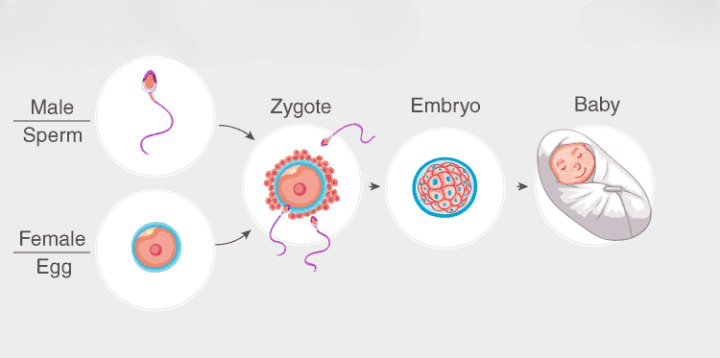
Sexual reproduction's capacity to produce genetic variety is one of its key characteristics. Meiotic recombination of genetic material and fertilization-induced mixing of the genetic features of two parents result in offspring with distinctive genetic combinations. By encouraging variety, which is advantageous in changing habitats or responding to dangers like illnesses or predators, this genetic diversity can improve a population's or species' adaptation and survival.
The cost of locating and enticing partners, the energy required to produce specialized gametes, and the possibility of STDs are some disadvantages of sexual reproduction. However, it is thought that the benefits of sexual reproduction, such as enhanced genetic variety, the capacity for adaptation, and the ability to repair damaged DNA through recombination, exceed the disadvantages, making it a very successful reproductive strategy in many species.
Asexual reproduction, in which offspring are created without using gametes or fusing genetic material from two parents, is distinct from sexual reproduction. Asexual reproduction can produce children genetically identical to or very similar to the parent, which reduces genetic diversity and adaptation. Asexual reproduction can produce offspring more quickly and with a higher reproductive output. Contrarily, sexual reproduction promotes genetic variation and offers an evolutionary benefit by enabling increased genetic diversity and environmental adaption.
As a result of the union of gametes from two parent organisms, sexual reproduction is a biological process that gives rise to offspring with distinct genetic characteristics. It encourages genetic diversity, improves adaptation, and has proven an effective reproductive strategy for many species throughout the Tree of Life.
Reproductive Strategy
The term "reproductive strategy" describes a specific method or group of methods an organism uses to have offspring and pass on its genetic makeup to the following generation. In addition to ecological environments, evolutionary forces, and reproductive physiology, various species have different reproductive strategies influenced by various variables. Reproductive strategies are important for a species' survival and development because they control how many children are generated, how many offspring are produced, and how parental resources are distributed to promote the offspring's survival and reproductive success. Natural selection employs several typical reproductive techniques, including:
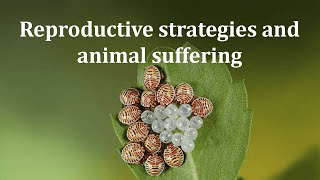
- R-selected Strategy: Also referred to as the "r-strategy," this method entails having many children while investing very little in each child. These species often have short lifespans, rapid reproduction, and early maturity. Numerous insects, rodents, and certain aquatic organisms are examples of r-selected species. The objective of r-selected organisms is to procreate to increase the likelihood that at least some of their offspring will survive.
- K-selected Strategy: Also referred to as "K-strategy," this method entails having fewer children but investing more of the parents' resources into each child. These species typically live longer, reach maturity later, and reproduce at a slower rate. Several mammal species, birds, and primates are examples of K-selected species. K-selected organisms invest more resources to increase each offspring's chances of survival and reproductive success.
Monogamy: This reproductive method entails long-term relationships between one man and one female, frequently to have children together. Many bird species and certain mammals, including humans, practice monogamy. Ensuring that both parents contribute to the offspring's upbringing, provisioning, and protection can improve their chances of survival and reproductive success.
Multi-mating is an element of the polygamous reproductive strategy. Two other categories of polygamy exist:
- Polygyny: It is the practice of a single male mating with several females. The aim is to maximize the number of kids a man can produce, and polygyny is prevalent in species where males give little or no parental care. Numerous mammals, including lions and elephant seals, are examples of polygynous species.
- Polyandry: This is the practice of having numerous males and females mate. Although it is uncommon, several bug and bird species exhibit polyandry. It can happen when females require more resources or assistance from more men to care for their children.
An individual who practices hermaphroditism has both male and female reproductive systems, enabling them to generate both eggs and sperm. Many marine invertebrates, including sea stars and some fish species, exhibit hermaphroditism. Individuals may mate with other members of the same species, allowing for effective reproduction.
Parthenogenesis: This reproduction method involves the generation of offspring from unfertilized eggs without fertilization. Fish, some reptiles, and some insects all exhibit parthenogenesis. Males are not required for reproduction, but the progeny have less genetic diversity.
Viviparity and oviparity are reproductive modes related to giving birth or egg production, respectively. In mammals and some fish, viviparity refers to the ability to produce living offspring after an internal gestation period. Oviparity, which occurs in most birds, reptiles, and many fish, is depositing eggs that hatch outside the body.
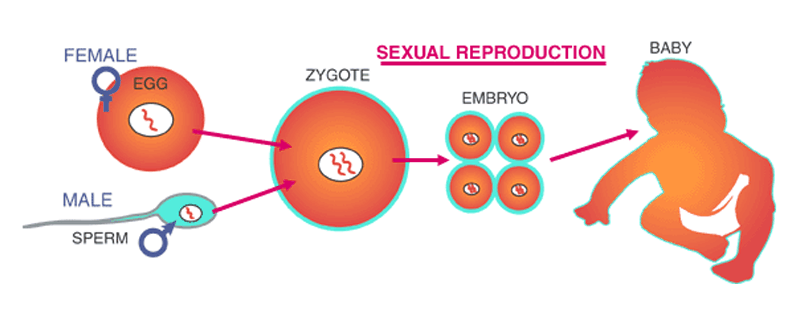
Reproductive tactics are intricate and can change substantially between species based on various ecological and evolutionary considerations.
Sexual Reproduction in Organisms:
Sexual reproduction is a type of reproduction in which the offspring of two parent organisms, usually of different sexes, is produced. It entails joining gametes, specific cells containing genetic information, to produce kids that inherit a special admixture of genetic features from both parents. In multicellular organisms, such as plants, animals, and fungi, sexual reproduction predominates over other forms of reproduction.
Sexual reproduction typically involves several crucial stages, including:
- Gametes: Individual cells that contain genetic information, are produced via a process called gametogenesis. Meiosis, a process used to create gametes in most animals, produces haploid cells with distinct genetic characteristics and half as many chromosomes as their parent cells.
- Gamete transfer: After gametes are created, they must get together for fertilization. Depending on the species, many mechanisms may be used for this. When gametes are released into the environment, external fertilization occurs, as with many aquatic species, including fish and amphibians. In other situations, gametes are directly exchanged between people through copulation or other specialized reproductive organs.
- Fertilization: Fertilization is the joining of gametes to create a zygote, the first cell of the new individual with a distinctive blend of genetic characteristics from both parents. Cellular and molecular events from fertilization normally spark the embryo's development.
- Development of The Embryo: Following fertilization, the zygote goes through a sequence of cell divisions and differentiates into an embryo. Depending on the species, different stages of embryonic development may be involved, such as cleavage, gastrulation, and organogenesis. Eventually, the procedure develops a mature child with all the required structures and organs.
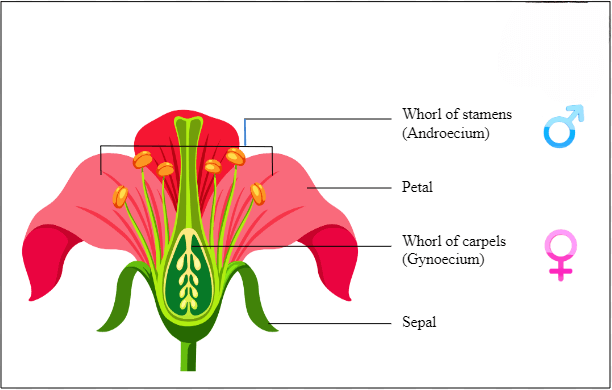
Numerous adaptations and benefits of sexual reproduction help many creatures succeed, including:
- Genetic Diversity: The creation of kids through sexual reproduction results in a unique combination of genetic features from both parents, increasing genetic diversity within a population. Given that there is a greater range of genetic variation for natural selection to work upon, this genetic diversity can improve a population's ability to adapt and survive in changing settings.
- Recombination: Repair of damaged DNA and recombination of genetic material from both parents are made possible through sexual reproduction, which results in the exchange and shuffle of genetic information. This can repair DNA damage and create novel genetic combinations to increase genetic diversity and adaptability.
- Evolutionary Innovations: Sexual reproduction can result in the formation of novel genetic features and innovations through genetic recombination and mutation, fostering evolutionary innovation and species diversification over time.
- Purging: Sexual reproduction can aid in the removal of dangerous mutations from a population. If a person contains a dangerous mutation, sexual reproduction enables the creation of offspring without that mutation through recombination with a partner who does not.
- Disease resistance: By creating offspring with a broad collection of immunological genes inherited from both parents, sexual reproduction might increase the ability of offspring to withstand diseases. This increases the likelihood of survival in a changing environment with various pathogens.
Despite its benefits, sexual reproduction has several disadvantages, such as the expense of attracting and locating partners, the danger of STDs, and the expense of creating and maintaining specialized reproductive apparatus. However, sexual reproduction has become a successful and predominant mode of reproduction in many animals due to its advantages, such as genetic diversity, evolutionary innovation, and adaptability.

Sexual Reproduction in Plants and Animals:
Although sexual reproduction in plants and animals demonstrates certain similarities, each group also possesses distinctive characteristics and adaptations.
Sexual Reproduction in Plants:
Gametes, often transported by specialized structures like flowers, are produced during sexual reproduction in plants. In contrast to the female gametes, known as eggs or ovules, which are generated in the ovary, the male gametes, or pollen, are created in the anthers of flowers. For plants to reproduce sexually, pollination?the movement of pollen from the male reproductive organs to the female reproductive organs?is frequently necessary.
When it comes to pollination, plants use various methods, including wind, insect, bird, and even animal pollination. Some plants are self-fertile, which means they can pollinate themselves and generate offspring without the aid of other pollinators. Still, other plants need the assistance of other individuals to cross-pollinate to reproduce successfully. Following pollination, a pollen grain develops into a tube that delivers the male gametes to the female gametes, where they can be fertilized. The zygote grows into an embryo after fertilization, which is shielded by a seed coat and finally results in the development of a new plant.
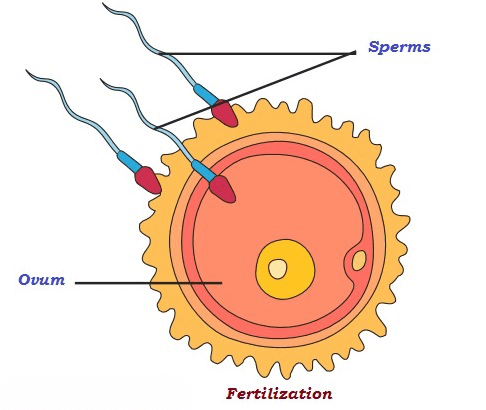
Sexual Reproduction in Animals:
Eggs and sperm are generated during sexual reproduction in animals, and these reproductive organs are known as gonads. Internal fertilization, in which sperm is deposited inside the female reproductive canal to fertilize the eggs, is necessary for sexual reproduction in most animals, including mammals, birds, reptiles, amphibians, and fish.
Animals use numerous mating rituals, reproductive organs, and reproductive techniques. Others may be hermaphroditic, which means they have both male and female reproductive systems, while some animals have separate male and female individuals. In aquatic species, mating behaviors can range from straightforward external fertilization to intricate wooing rituals and copulatory actions in terrestrial animals. Following fertilization, the zygote passes through several phases of embryonic development before becoming a young or adult animal.
Unique Features of Sexual Reproduction in Plants and Animals:
- When pollen is transmitted from the male reproductive organs to the female reproductive organs during pollination, fertilization can occur. Pollination is a distinctive aspect of sexual reproduction in plants. Both biotic and abiotic elements, such as insects, birds, and animals that serve as pollinators, may be present in this process. For animals, internal fertilization is the primary method of gamete transfer; pollination is unnecessary.
- Pollen is formed by the male reproductive organs of plants and discharged as gametes, created within specialized structures like flowers. In mammals, gonads, specialized organs, are normally the sites of gamete production, while the male reproductive organs discharge sperm.
- In plants, fertilization occurs when the male gametes are delivered to the female gametes inside the ovules by the pollen tube. When sperm are introduced into the female reproductive system and combined with the eggs, animal fertilization occurs.

- Development of the embryo: Differential embryonic development occurs in plants and mammals. In plants, the zygote matures into an embryo, eventually giving rise to a new plant after being protected by a seed coat. When it comes to animals, the zygote transforms into an embryo, which then goes through several phases of development before becoming a juvenile or adult mammal.
- Reproductive Structures: To aid in sexual reproduction, plants, and animals have developed specialized reproductive structures. This refers to the ovules, pollen grains, and blooms of plants. This comprises the copulatory gonads of mammals.
Genetic Diversity and Sexual Reproduction:
Genetic diversity is the variety of genetic traits found within a population or a species. To create and sustain genetic variation in populations, sexual reproduction is an essential process.
Sexual reproduction promotes genetic diversity through several mechanisms:
- During sexual reproduction, two parent organisms exchange genetic material. Usually, this happens when gametes (sperm and eggs) fuse. Due to the mixing and shuffling of the genetic material from the two parents during this process, genetic recombination occurs, giving rise to children with distinctive mixes of genetic features. Because offspring acquire a broader range of genetic features from their parents, genetic recombination broadens the genetic diversity within a community.
- Sexual reproduction can aid in the repair of DNA mutations. DNA replication and cell division occur during gametes' development, which can aid in DNA repair and mutation correction. As a result, populations are less likely to accumulate dangerous mutations and to keep their genetic integrity.
- Through a process known as recombination repair, sexual reproduction can also assist in the repair of damaged DNA. In meiosis, genetic material is exchanged between homologous chromosomes, which can fix DNA breaks and damage. This repair process aids in preserving genetic stability and stops populations from accumulating dangerous mutations.
- Rapid adaptation to changing surroundings: Compared to asexual reproduction, sexual reproduction enables faster adaptation to changing environments. A wider variety of genetic features produced by sexual reproduction provide organisms with a better chance of surviving and reproducing in dynamic environments. Unique genetic pairings may result in offspring with favorable features that let them adapt to shifting environmental factors like disease, predation, or environmental stress.
- Sexual reproduction can also lessen a population's susceptibility to parasites and other illnesses. Offspring with variable immunological responses and tolerance to parasites and diseases can be produced due to the genetic variety produced by sexual reproduction. Because of this diversity, parasites, and pathogens find it more challenging to adapt and get past the host's defenses, lessening the overall disease burden on populations.
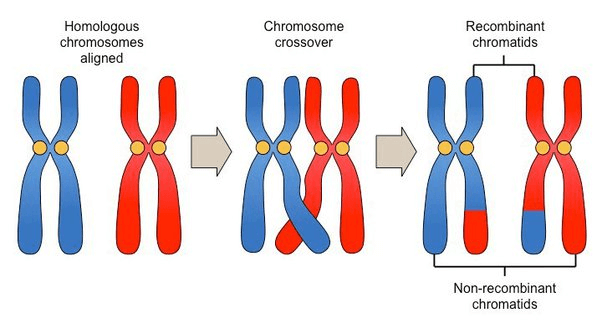
In conclusion, sexual reproduction increases genetic diversity through genetic recombination, mutational repair, recombination repair, quick environmental adaption, and decreased susceptibility to diseases and parasites. These populations have a greater capacity for adaptation, resiliency, and evolutionary potential, all essential for species' long-term survival and evolution.
Evolutionary Advantage of Sexual Reproduction:
Asexual reproduction, conception without using gametes or transferring genetic material between parents, has various evolutionary advantages over sexual reproduction. The following are a few evolutionary benefits of sexual reproduction:
- Genetic Diversity: Through genetic recombination and the transfer of genetic material between parents, sexual reproduction creates offspring with distinctive combinations of genetic features. Due to this genetic diversity, populations with greater genetic variability are more adaptable and resilient to changing environmental conditions. Additionally, because favorable features can be passed down through recombination and selection, it enables quicker adaptability to change environmental factors.
- Evolving and Adapting More Quickly: Compared to asexual reproduction, sexual reproduction can hasten the process of evolution and adaptation. New genetic combinations may be created due to the genetic material exchange and recombination that occurs during sexual reproduction and may be better suited to adapt to alterations in the climate, predation pressure, or resource availability, among other environmental factors. This improves the chances of sexually reproducing organisms surviving and successfully reproducing by allowing them to evolve and adapt to new situations more quickly.
- Repair of Damaging Mutations: Various methods, including DNA repair during gamete creation and recombination repair during meiosis, can enable sexual reproduction to fix DNA mutations. Preventing the accumulation of deleterious mutations in populations, which can be hazardous to survival and reproductive success, aids in maintaining genetic integrity.
- Lessening Susceptibility to Parasites and Pathogens: Sexual reproduction can improve populations' resistance to parasite and pathogen effects. By creating kids with various immunological responses and tolerance to parasites and pathogens through sexual reproduction, genetic diversity can be created, making it more difficult for parasites and pathogens to adapt and overwhelm the host's defenses. By doing so, communities become less susceptible to illnesses and have better odds of surviving and procreating.
- Facilitating the Diversification of Species: By resulting in novel genetic combinations through genetic recombination, sexual reproduction can aid in the diversification of species. As a result, new features, adaptations, and genetic lineages may appear, which may eventually result in the formation of new species.
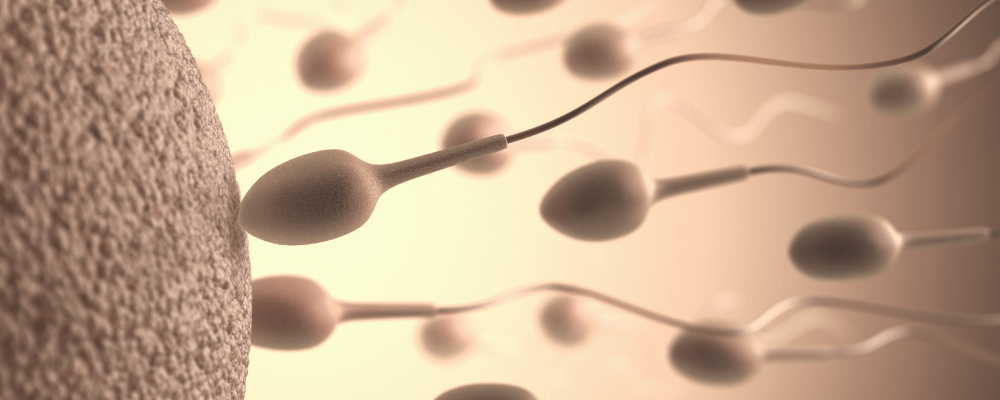
- Courtship: Social interactions between people can be facilitated by sexual reproduction, including wooing practices, mate competition, and mate selection. These social interactions can potentially encourage the evolution of complex behaviors like social bonding, collaboration, and communication, which can help sexually reproducing creatures survive and reproduce more successfully.
In conclusion, sexual reproduction has several benefits for evolution, including genetic diversity, rapid evolution and adaptability, repair of deleterious mutations, decreased vulnerability to parasites and diseases, encouragement of species diversification, and facilitation of social interactions. These benefits let sexual reproduction succeed and endure as a common reproductive method used by various Earth creatures.
Sexual Reproduction Vs. Asexual Reproduction:
To reproduce and pass on their genetic material to the following generation, organisms use sexual and asexual reproduction. Here are some significant distinctions between sexual and asexual reproduction:
- Genetic Diversity: The exchange and recombination of genetic material between parents during sexual reproduction results in children with distinct combinations of genetic features, increasing genetic diversity. Contrarily, asexual reproduction results in kids who are genetically identical to or very similar to the parent, reducing genetic diversity.
- Production of Children: Gametes (sperm and eggs) are fused during sexual reproduction, typically producing fewer children than asexual reproduction, which can produce many children quickly. Asexual reproduction can lead to rapid population growth and colonizing new settings.
- Genetic Diversity: Through genetic recombination, sexual reproduction can bring novel genetic features and combinations that promote evolutionary innovation and adaptation to changing circumstances. Genetic variation in asexual reproduction is restricted to mutations, which can happen more slowly than in sexual reproduction.
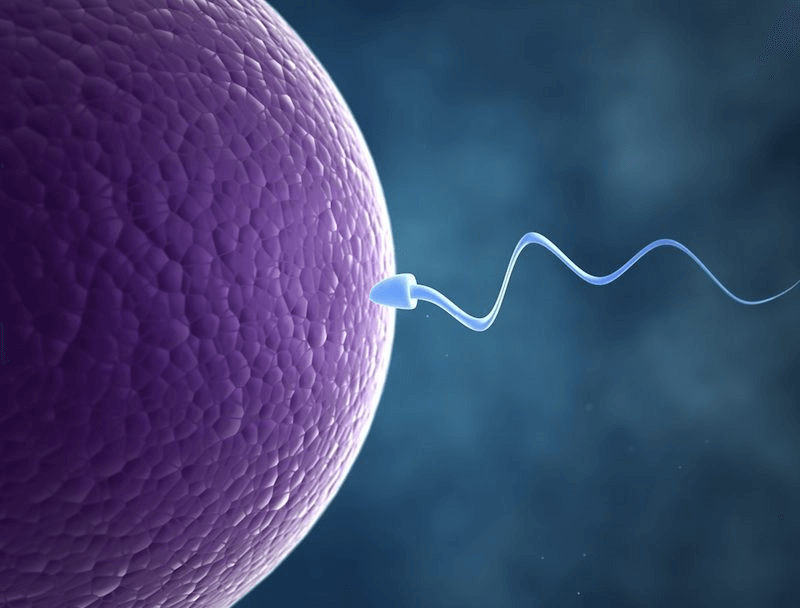
- The Efficiency of Reproduction: Since asexual reproduction does not involve the time and effort needed to find and mate with a compatible partner, produce gametes, or engage in wooing behaviors, it can be more effective in terms of reproductive output. Contrarily, sexual reproduction necessitates a greater time and energy commitment to identify and attract partners, produce gametes, and engage in mating behaviors.
- Adaptability: Due to greater genetic variety and recombination of genetic material, which can produce children with beneficial features, sexual reproduction enables faster adaptability to changing circumstances. Contrarily, as the kids are genetically identical to or extremely similar to the parents and may lack the genetic diversity required for quick adaptation, asexual reproduction may be less able to adapt to changing environmental conditions.
- Evolutionary Potential: Sexual reproduction has a larger evolutionary potential than other methods because it creates new genetic combinations that eventually result in novel features, adaptations, and genetic lineages. Contrarily, because genetic variation is restricted to mutations and may happen more slowly in asexual reproduction, it may have a lesser evolutionary potential.
- Mullers's Ratchet: Asexual reproduction poses a risk of the accumulation of deleterious mutations over time because there may be no mechanism for fixing or removing these changes. In sexual reproduction, processes like genetic recombination and DNA repair during gamete creation and meiosis can help fix or eliminate undesirable mutations, lowering the likelihood that they will accumulate.
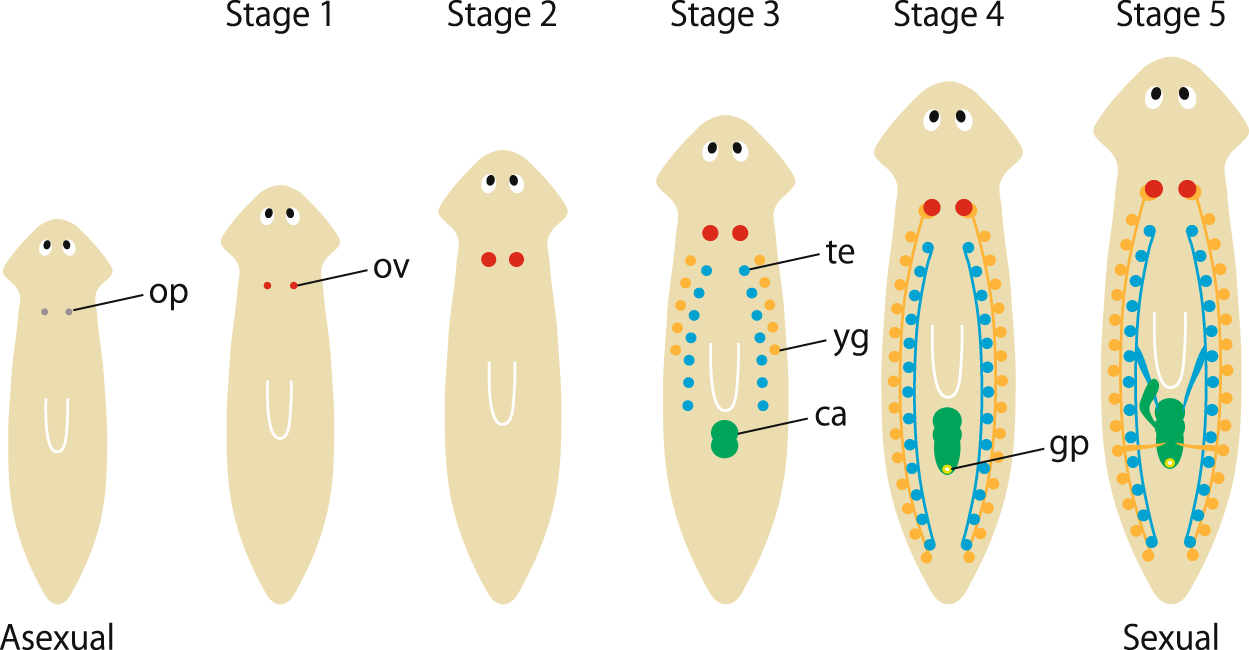
In conclusion, there are important distinctions between sexual and asexual reproduction regarding genetic diversity, offspring production, genetic variation, reproductive efficiency, adaptability, evolutionary potential, and risk of amassing dangerous mutations. Both approaches have benefits and drawbacks, and how well they work depends on the particular ecological and evolutionary conditions in which an organism exists.
Mechanisms of Sexual Reproduction:
Complex processes enable the fusion of gametes (sperm and eggs) from two parent species during sexual reproduction, resulting in offspring with unique genetic feature combinations. Some essential sexual reproductive systems include the following:
- Gametogenesis is the developing specialized cells called gametes, which are haploid (with half as many chromosomes as the parent cells) and can mate with another gamete during fertilization. Meiosis, which creates sperm cells in men and egg cells in women, is the process through which gametogenesis, or the production of sperm and eggs, occurs in mammals in the specialized reproductive organs (such as the testes and ovaries). Gametangia, specialist organs that produce haploid sperm and egg cells, are where gametogenesis occurs in plants.
- The zygote, the embryo's first cell, is created during fertilization by joining the gametes of two parent organisms. Fertilization usually occurs internally in terrestrial or aquatic organisms. During fertilization, the genetic material from the sperm and egg combines to form a diploid zygote, which has a complete set of chromosomes.
- Genetic recombination is an essential component of sexual reproduction that increases genetic variety. The homologous chromosomes from each parent exchange genetic material throughout the meiotic process, called crossing-over. Increased genetic diversity results from rearranging genetic material, which creates novel gene combinations in the progeny.
- Syngamy is when the sperm and egg nuclei fuse during fertilization to generate a diploid zygote. The zygote's special blend of genetic material from the two parent organisms defines the offspring's genetic characteristics.
- Complex activities called mating habits make it easier for members of the same species to interact, recognize one another, and mate. Courtship customs, pheromone communication, physical contact, and other mating behavior can contribute to effective fertilization and reproduction.
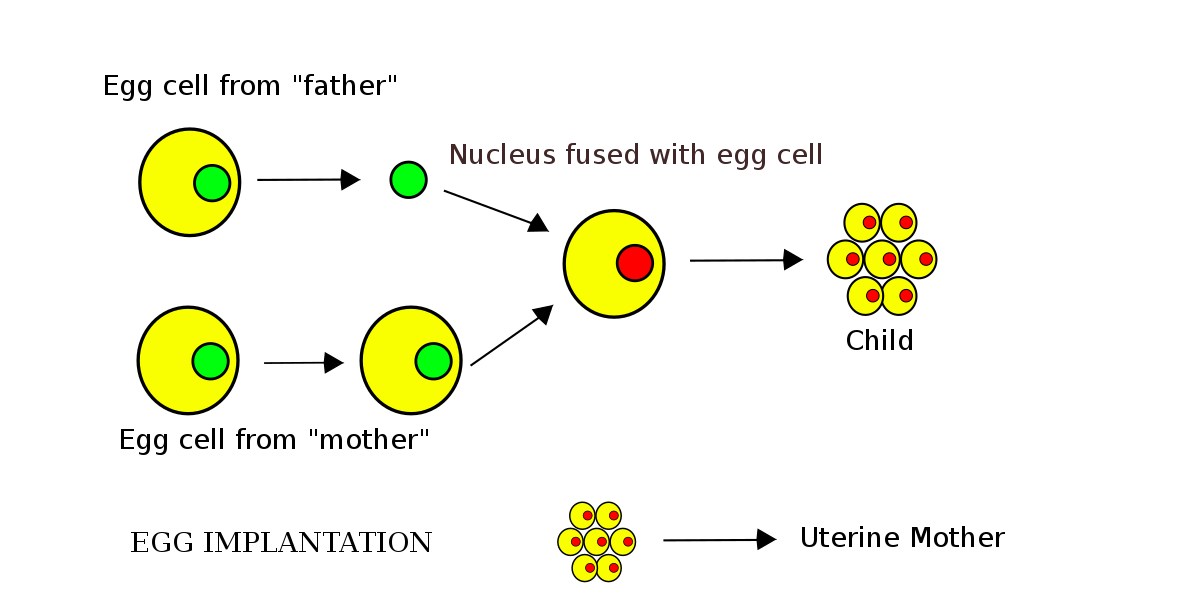
- Transport of gametes to the site of fertilization is necessary for many species. This can happen via several processes, including water currents in the case of aquatic species, pollinators in the case of plants, or specific reproductive organs in the case of animals.
- Specialized reproductive organs and structures, including the testes, ovaries, uterus, penis, vagina, flowers, and pollen grains, responsible for making, storing, and distributing gametes, are frequently involved in sexual reproduction.
These are a few of the main processes involved in sexual reproduction. It's crucial to remember that sexual reproduction varies significantly between species, and a wide variety of intricate systems have developed through time to aid in the effective reproduction of organisms.
Reproductive Organs and Processes in Sexual Reproduction:
Because they produce, store, and deliver gametes (sperm and eggs) in organisms, reproductive organs, and processes are crucial for sexual reproduction. The following list of typical reproductive systems and procedures for sexual reproduction includes:
- Ovaries and Testicles: In contrast to the ovaries, which are found in females and produce eggs (oocytes), the testes are the male reproductive organs that generate sperm. These organs are responsible for animal gametogenesis, which creates haploid gametes during meiosis.
- Uterine and Uterine-Like Structures: In mammals, a fertilized egg implants in the uterus and develops into a fetus. Other species may have organs resembling uteri, such as brood pouches in seahorses or marsupial pouches in marsupials, where fertilized eggs develop into progeny.
- During sexual activity, the male reproductive organ known as the penis, also known as the vagina, is utilized to carry sperm to the female reproductive system. The female vagina is a reproductive organ that accepts sperm during sexual activity and functions as a delivery canal to deliver young.
- Ovarian oviducts, called "fallopian tubes", are female reproductive organs that carry eggs from the ovaries to the uterus. In many species, including mammals, fertilization takes place there as well.
- Flowers and Pollen Grains: Flowers are the reproductive structures that create plant gametes. The male reproductive organ, the anther, produces pollen grains containing male gametes. It delivers them to the female reproductive organ known as the stigma so that fertilization can occur.
- Pollinators: Many plants depend on pollinators, like bees, butterflies, birds, or bats, to move pollen from the male reproductive organs of one flower to the female reproductive organs of another, facilitating fertilization and reproduction.
- Copulation and Mating Behaviors: Copulation, the physical mating of individuals of the opposite sex to facilitate the transfer of gametes, is a key component of sexual reproduction in many species. Individuals are frequently drawn together for effective mating by mating behaviors such as wooing rituals, pheromone signals, or physical contact.
In many organisms, gametes must be carried to the location of fertilization. This can happen via several processes, including wind in plants, specialized animal reproductive organs, and water currents in aquatic creatures.
The reproductive systems and mechanisms used in sexual reproduction include some of the following. It's crucial to remember that different species' reproductive systems and organs might differ significantly from one another and are highly specialized to enable effective gamete development, fertilization, and reproduction.
Conclusion:
Offspring are created through the fusion of gametes during sexual reproduction, which is a key mechanism in organisms. This process results in genetic variety and adaptation to shifting surroundings. Specifically designed cells called gametes, created by reproductive organs through procedures like meiosis, are produced, stored, and delivered during this process. Increased genetic variety, which supports adaptability and evolution, DNA repair, and the eradication of dangerous mutations are only a few benefits of sexual reproduction. Additionally, it enables the recombination and interchange of genetic material, which results in genetic variety in progeny. However, there are expenses associated with sexual reproduction, such as the requirement to identify and attract mates, spend money on producing specialized gametes, and engage in mate competition. However, sexual reproduction has succeeded and is the predominant method.
|








 For Videos Join Our Youtube Channel: Join Now
For Videos Join Our Youtube Channel: Join Now














